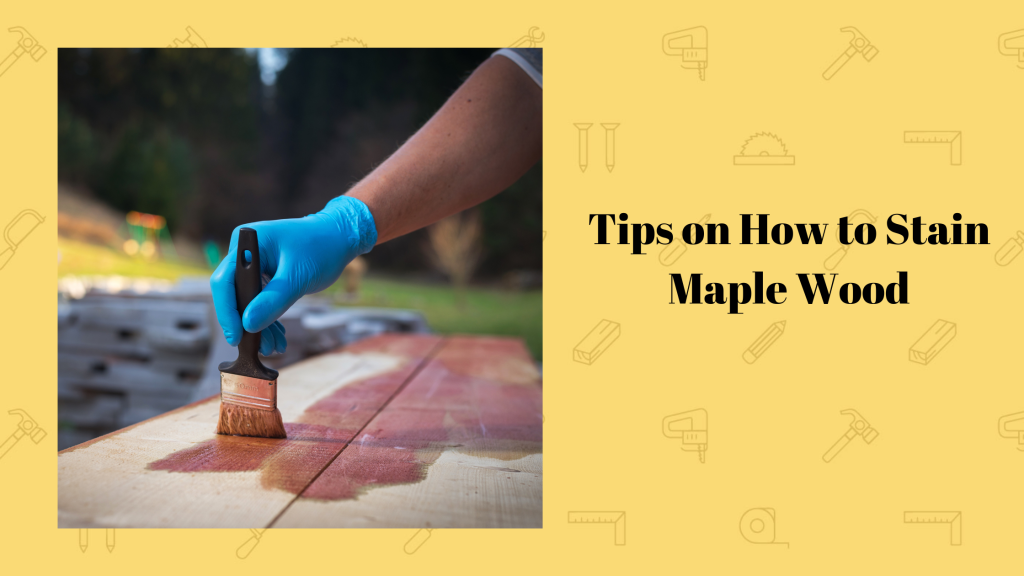In the realm of woodworking, few things are as captivating as the elegance of Walnut – and walnut wood color. Sophisticated, charming, and one of the stars of every workshop. It’s like the James Bond of the tree world. Yet, surprisingly, Walnut is often overlooked and underhyped compared to some of its cousins like maple and oak. Well, it’s time for some long-overdue appreciation; we are here to roll out the red carpet and sprinkle some stardust on this natural masterpiece.
Getting To Know the Walnut Wood
Disclaimer: This article will be focusing on Walnut wood and not the popular dessert, even though we love that too! So if we mention a large walnut we are most likely referring to heavy cords of wood and not a giant fruit.
Now that’s out of the way; walnut wood is timber derived from the walnut tree. It is native to Europe and Asia and produces valuable wood used in woodworking.
Uses of Walnut Wood
As we said, walnut wood is a cherished member of the woodwork family. Here are some common ways its elegance is applied in the workshop:
Furniture making
Perhaps the most common use of walnut wood is furniture making. Walnut is used for making everything from sleek dining tables to bed frames, and grandma’s rocking chair (because she deserves the best!). The unique color of walnut wood adds a dash of sophistication to any interior space.
Flooring
Wooden floors are quickly taking over the flooring industry, and walnut is at the forefront of the revolution. Walnut wood color comes in a few variations, but the dark-brown hue is particularly popular in flooring. The classic color instantly creates an inviting and comfortable atmosphere for visitors – an alternative if you aren’t a fan of welcome mats.

Musical Instruments
Walnut’s magnificence doesn’t just stop at interior decoration, its impact can also be seen in the melody-making industry. Guitars, saxophones, flutes, and other wooden instruments are also often made with walnut due to the wood’s smoothness, ease of use, and durability. The walnut’s unique color and grain patterns also add a lot of aesthetic appeal to instruments.
Art Pieces
Another common use of walnut is in the making of small art pieces like sculptures and carvings. Unlike some other wood species, walnut doesn’t lose its color or sturdiness easily, so it is often used to make art that requires durability – like puzzle pieces. Walnut wood is popular for crafting decorative items such as bowls, vases, picture frames, and small furniture accents.
Characteristics of Walnut Wood
While Walnut Wood has a lot of attractive qualities, its color is its selling point. Walnut wood comes in a range of captivating shades that adds class to anything it touches. From chocolate candy brown to a latte swirl, they come in all shades of “wow.”
Walnut heartwood is renowned for its rich and dark hues, often ranging from deep chocolate brown to almost black. The color can have purple, red, or gray undertones, lending a sense of depth and elegance to the wood.
On the other hand, Walnut sapwood presents a lighter and more pale appearance. It can range from a creamy off-white to a light yellowish-brown color. Sapwood is typically found closer to the outer edges of the tree trunk and is visually distinct from the darker heartwood.
Why Does Walnut Wood Color Change?
A wood specie having this many color variations is rare in the tree world. You may be forgiven for thinking Walnut is planted with some form of secret tree coloring. But it’s not. The real reason for its varying colors is down to a few factors. First is age; ever heard of a fine wine getting better with age? Meet the wood version! As walnut ages, the color deepens and slowly turns into the dark heartwood color we all love.
Another determining factor in a walnut’s color is mother nature herself. The soil and climate where Walnut grows greatly affect their color. For example, a walnut grown in sunny Spain getting a tan all year round will come out with a different color tone than one grown in Iceland’s chill weather.

Walnut Wood Color vs. Other Hardwoods
Before jumping into how walnut color compares to other wood types (Spoiler Alert: it’s better). Let’s quickly answer an important question. You might be wondering, “Is walnut a hardwood or softwood specie.” Like most other wood used in furniture and construction, Walnut is a hardwood tree – as sturdy as it is stunning. Walnut wood grain also shares a lot of similarities to other hardwood trees.
While its hardwood cousins level up to its strength and durability, they can’t quite match Walnut’s aesthetic appeal. What does walnut look like in comparison to other hardwoods? Well, let’s just say in a wood beauty pageant, Walnut struts the runway with its unique color. The others never stood a chance. What separates Walnut from its counterparts is the range of colors it can exhibit, while other hardwood trees mostly have one or two shades of light or dark brown to offer.
Oak, for example, is known for its earthish brown tones, which have some similarities to the sapwood of Walnut. However, the heartwood of Walnut has a different and darker tone which oak cant match aesthetically. Maple wood also has the same light brown color which can be found in Walnut, but once again, there is very little color variation, and it pales in contrast. Think of a chicken spreading its wings next to a peacock!
How To Maintain and Enhance Walnut Wood Color
Maintaining and enhancing the already dashing walnut wood color is a walk in the park. The wood already looks splendid and stays that way unless you are on a sabotage mission like a Bond villain. However, there are steps you can take to ensure its quality takes no hits. Let’s dive in:
- Shield it from the spotlight: Walnut wood, like any celebrity, prefers to avoid direct sunlight. Those UV rays can dent its glorious color over time. So, give it some shade by using curtains or blinds to protect it from excessive sun exposure. It’s like giving your wood a stylish pair of sunglasses to rock.
- Moisturize like a pro: Just like your skin needs moisturizer, walnut wood craves a little hydration too. Some high-quality wood oil is the best finish for walnut. Nothing too saturated with chemicals, just something to keep its natural luster and prevent it from drying out. It’s like giving your wood a spa-grade facial—refreshing and rejuvenating.
- Avoid waterworks: Walnut wood isn’t a fan of excessive moisture, so keep it away from wet and damp areas. Water can leave unsightly marks or even warp the wood. So, be sure to clean up spills promptly and use coasters under glasses to keep your walnut wood feeling dry and fabulous.
- Gentle cleaning, darling: When it’s time to give your walnut wood a gentle cleaning, leave the harsh chemicals at the door. Opt for a mild soap or specialized wood cleaner. Use a soft cloth to wipe away any dust or dirt gently. It’s like giving your wood a relaxing bubble bath—gentle and soothing.
Conclusion
And there you have it, folks, everything you never knew you needed to know about walnut wood color! There are other hardwood options out there, but none quite have the charm and visual appeal of Walnut, the clear winner of the forest beauty pageant.
*This post may contain affiliate links. Please see my disclosure to learn more.



